Art Deco - Marion Dorn
Marion Dorn
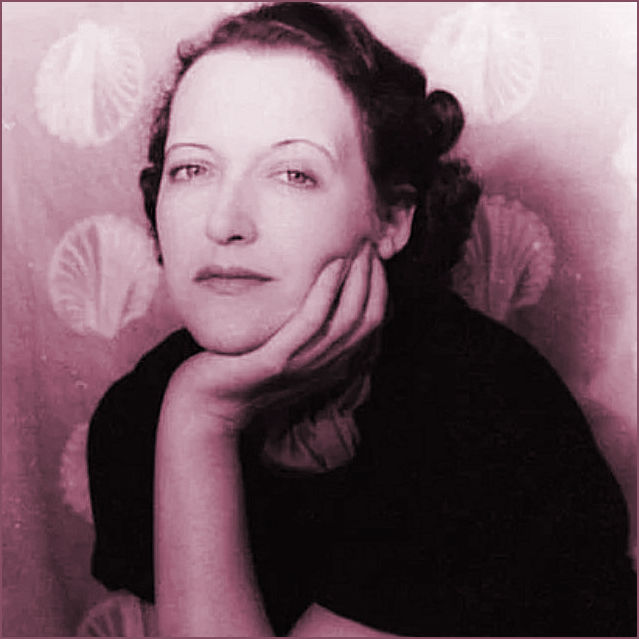
Marion Dorn, originally from America, was one of the leading female designers in Britain in the 1930s. - Image and strapline as seen on the The Daily Telegraph web-page | Marion Dorn by Carl van Vechten 1936: 1896-1964 Credit: Mayor of London's Office
Biography
American | b. Menlo Park, CA, USA, 1896 | d. Tangier, Morocco, 1964
Best known for her vibrant textile and carpet designs. Marion Dorn studied graphic design at Stanford University, intending a career as a poster designer. She married her tutor, painter Henry Varnum Poor, and moved with him to New York. In 1923, however, a series of chance encounters in Paris changed her life completely. With fellow designer, Ruth Reeves, she met the Fauvist painter Raoul Dufy, who had expanded his practice into textiles. Inspired by his work, Dorn resolved to apply her Art Deco-infused illustrative style to fabrics. She also encountered Edward McKnight Kauffer, a talented American-born graphic artist who became her lover and lifelong partner. Together they moved to London and began to establish themselves professionally.
Dorn's first recognition came in 1925, when her batik designs were featured in Vogue Magazine. These embodied the spirit of Art Deco, merging machine-age angularity and a symmetrical glamour redolent of Graeco-Roman designs. This distinctive neoclassicizing Modernity struck a chord with the affluent youth of 1920s London, and Dorn's textiles were soon stocked in stores across the city. Wilton Royal Carpets exhibited her rugs at the Arthur Tooth & Sons Gallery, Bond Street, and her avant-garde credentials led to coverage in The Studio Yearbook of Decorative Art and participation at the 1927 International Exhibition of Arts and Crafts in Leipzig. That year, Dorn designed the rug for the first of the 'white rooms'
by interior decorator Syrie Maugham. It was Dorn's most overtly Modernist design yet: a complex of thick, intersecting shag strips on a field of clean ivory, demonstrating her genius for 'sculpting' the surface of a rug into a terrain of harmonized relief.
Her work for luxury hotels in London was also much acclaimed. In 1931 she produced room carpets for the Berkeley Hotel, followed by a series of monumental floor coverings for Claridge's This was swiftly followed by similarly scaled work for the Savoy - a total of 390 sumptuous rugs in various geometric configurations. The peak of her interaction with England's moneyed elite, however, came in 1933, when the millionaire Stephen Courtauld and his wife, Virginia, commissioned a Dorn rug as a focal point for the entrance hall of their glamorous Art Deco extension at Eltham Palace, designed by Rolf Engströmer and Peter Malacrida. Upon the concentric, semi-circular sweeps of this rug, the cream of British Society were entertained. Dorn's waveform rugs also acted as a centrepiece for the Central foyer of the Midland Hotel in Morecambe. As was the fashion, the hotel was awash with aquatic allusions to the sleek, hydrodynamic lines of modern steamships. Perhaps as a result, Dorn was subsequently commissioned to design carpets and textiles for ocean liners, including 'Orion' (1934), Queen Mary (1936) and Orcades (1037).
She founded her own company in 1934 and, in 1938 transformed the seating of London Underground carriages with a beautifully executed moquette fabric, christened Colindale after the recently opened Northern Line Station. The influence of this design, with its formalized leaf motif and pared-back colour palette,can still be spotted on transport seating across the world.
Dorn's love affair with London ended abruptly with the outbreak of World War II, when she and her husband heeded advice and left for New York. She worked as a commercial designer, producing myriad wallpaper and textile prints for companies such as Schumacher and Greeff Fabrics throughout the 1940s. But Dorn struggled to maintain the same level of high-end commissions as in England. After Kauffer died in 1954, she began winding down her creative practice. She signed off her career, however, with one last achievement: a large carpet for the Diplomatic Reception Room at the White House (1960). On retiring, she decamped to Morocco in 1962, where she died two years later.
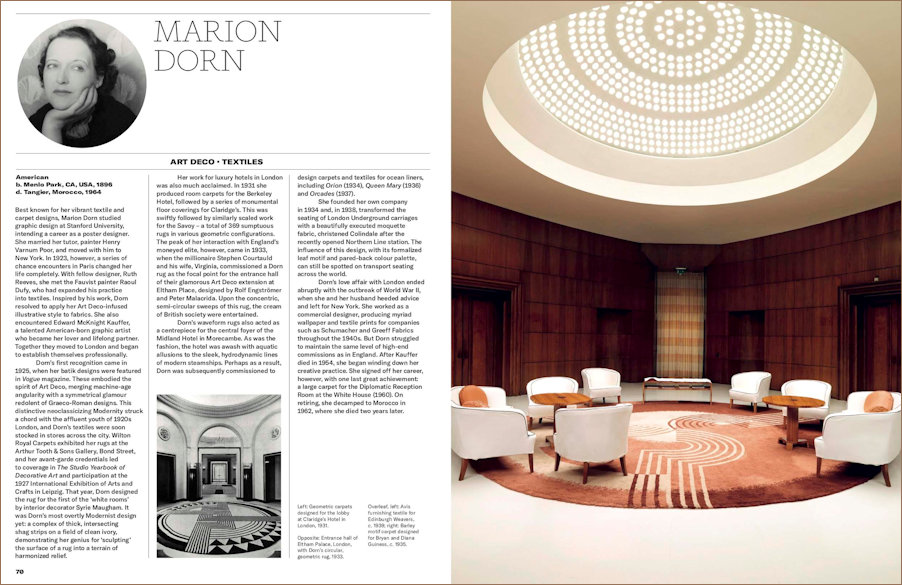
Image and biographical information sourced from cargocollective.com with thanks,
Marion Dorn: The woman behind London's infamous tube seat design
To celebrate 100 years since British women were given the right to vote, The Telegraph - alongside the Mayor of London's #BehindEveryGreatCityCampaign - is running a weekly series. 'Hidden Credits' will look back and celebrate individual women who have smashed glass ceilings, helped change society for the better and given the UK's capital something to boast about.
Week 4: Marion Dorn
Responsible for designing one of the most iconic patterns on display in London, Marion Dorn was a textile designer from California, who made the UK capital her home from 1923 to 1940. The creative brains behind the famous Transport for London seat design the 'Colindale Moquette', Marion first designed the pattern in the 1930s. It became so iconic that it went on to inspire all future London public transport textile design.
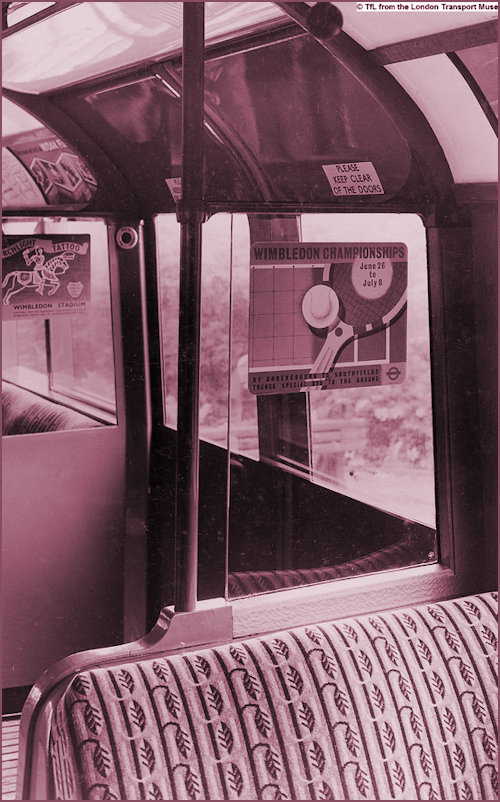
Image sourced from and © of the London Transport Museum via the Daily Telegraph (why do the Telegraph think this design* is infamous?)
Born on Christmas Day in 1896, Marion was educated at Stamford University in graphic arts. Her career took her to New York, Paris and eventually London, the city where she accelerated towards success after British Vogue featured five of her batik designs in 1925. Quickly becoming a household name in the design world, Marion went on to create some of the best-known interiors of the time, seen in the Savoy, Claridges and the Queen Mary ocean liner. She retired to Tangier, Morocco in 1962, where she died on January 28, 1964. In 1960, she signed off from her industry-leading career in style with one last major commission: designing the carpet in the diplomatic reception room at the White House.
* 'Leaf' or 'Colindale' design, by Marion Dorn, 1937 and reprised in 1945 for more designer information/biography visit London Transport Museum
Eltham Palace
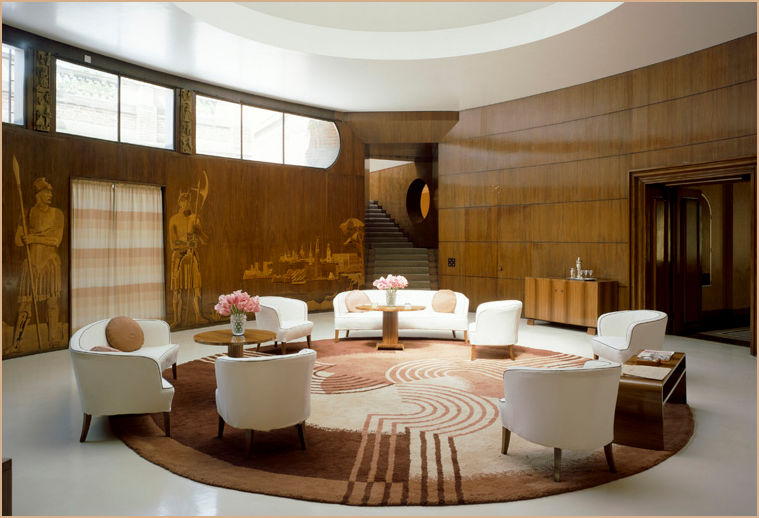
Marion Dorn Circular Rug in the Foyer of Eltham Palace - image courtesy & © of English Heritage
Claridge's Hotel

1932 Claridge's Hotel, Brook Street, Mayfair, London: the hexagonal lobby with carpet designed by Marion Dorn - image courtesy & © of Architectural Press Archive / RIBA Collections
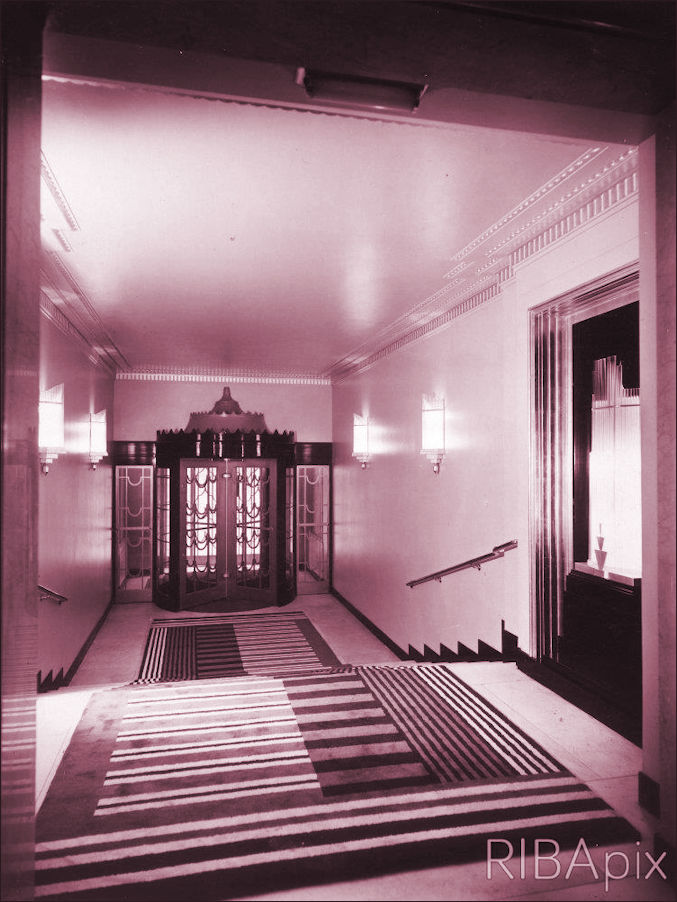
1932 Claridge's Hotel, Brook Street, London: the entrance corridor from Brook Street which leads to the ballroom / banqueting suite with a carpet by Marion Dorn - image courtesy & © of Architectural Press Archive / RIBA Collections
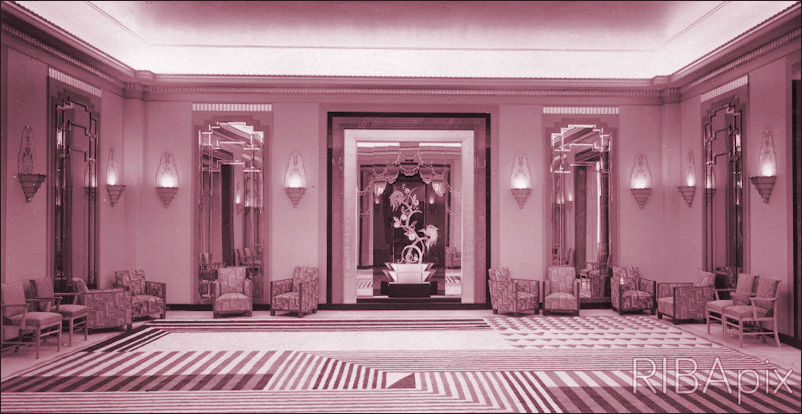
1932 Claridge's Hotel, Brook Street, Mayfair, London: the reception hall with carpet designed by Marion Dorn - image courtesy & © of Architectural Press Archive / RIBA Collections
Midland Hotel
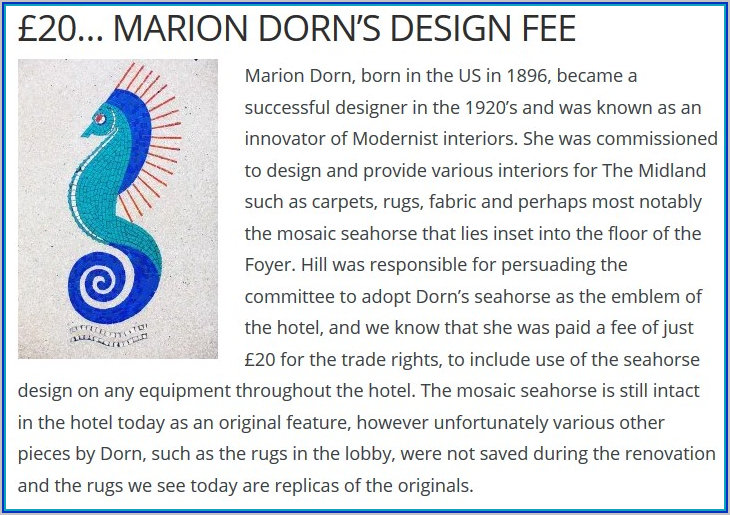
One of the 'Five facts you might not know about the Midland Hotel' as divulged by its current managers, English Lakes
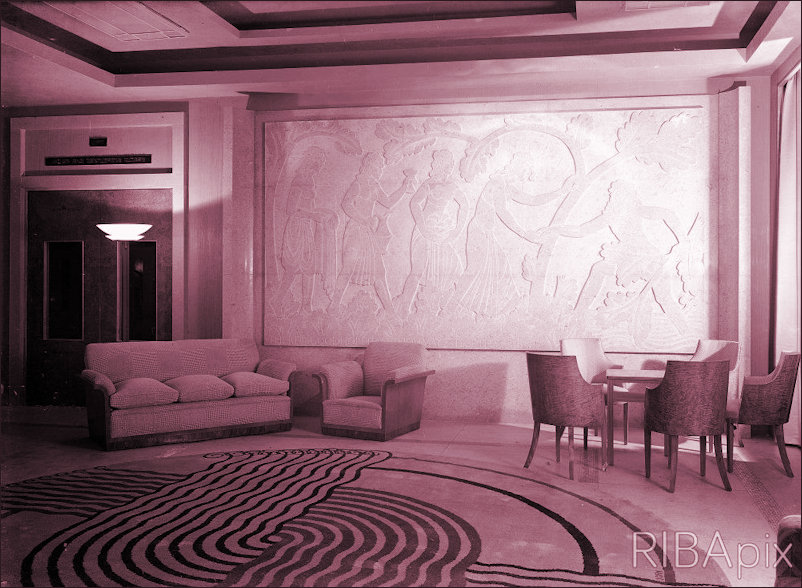
1933 Midland Hotel, Morecambe, Lancashire: corner of the hall with stone relief by Eric Gill and rug by Marion Dorn - image courtesy & © of Architectural Press Archive / RIBA Collections
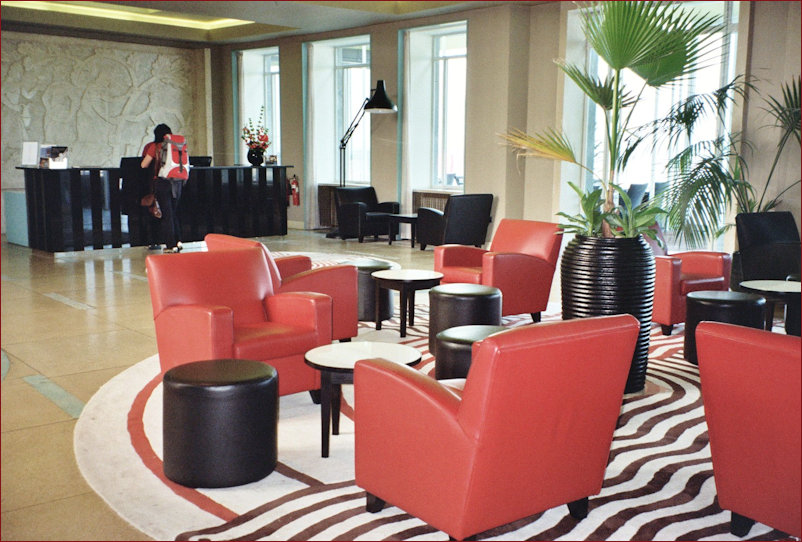
Present Day reception area featuring the reproduction Marion Dorn rugs and original stone relief by Eric Gill - Photo © J Anna Ludlow Private Collection
Present Day reception area (alternative view) featuring the reproduction Marion Dorn rugs and original stone relief by Eric Gill - Photo © J Anna Ludlow Private Collection
Present Day reception area (alternative view) featuring the reproduction Marion Dorn rugs and original stone relief by Eric Gill - Photo © J Anna Ludlow Private Collection
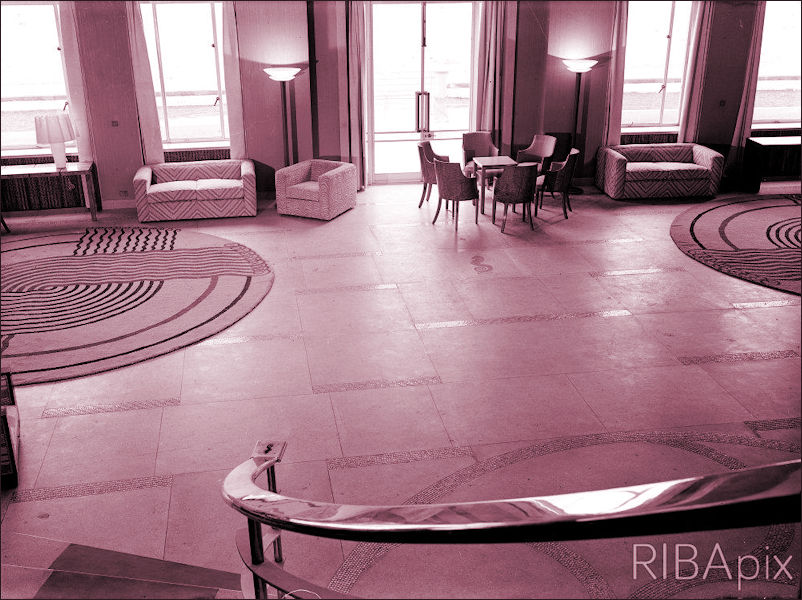
1933 Midland Hotel, Morecambe, Lancashire: the hall with rugs by Marion Dorn - image courtesy & © of Architectural Press Archive / RIBA Collections
From the RIBA Collections a detailed provenance for the Midland Hotel reception area
As the Midland Hotel is restored to its greatness, so too are the wonderful Marion Dorn rugs seen here situated in their original placement in the foyer (reception) area with modern but appropriately designed furniture - the floor artwork is still being completed but the original (preserved) Marion Dorn seahorse is clearly visible. - Photo © J Anna Ludlow Private Collection
As the Midland Hotel is restored to its greatness, so too are the wonderful Marion Dorn rugs seen here situated in their original placement in the foyer (reception) area with modern but appropriately designed furniture - the floor artwork is still being completed and the entrance to the modern dining area is no longer screened over - Photo © J Anna Ludlow Private Collection
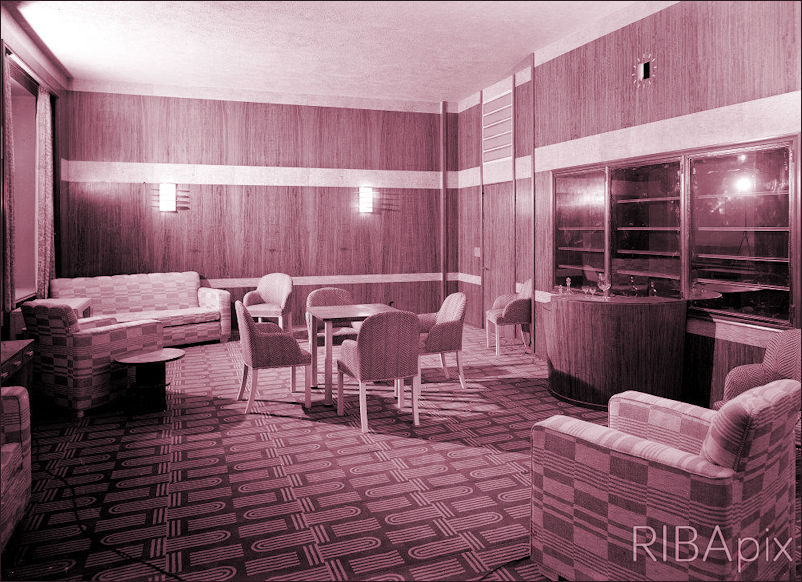
1933 Midland Hotel, Morecambe, Lancashire: the lounge with carpet by Marion Dorn (also seen in the writing room) - image courtesy & © of Architectural Press Archive / RIBA Collections
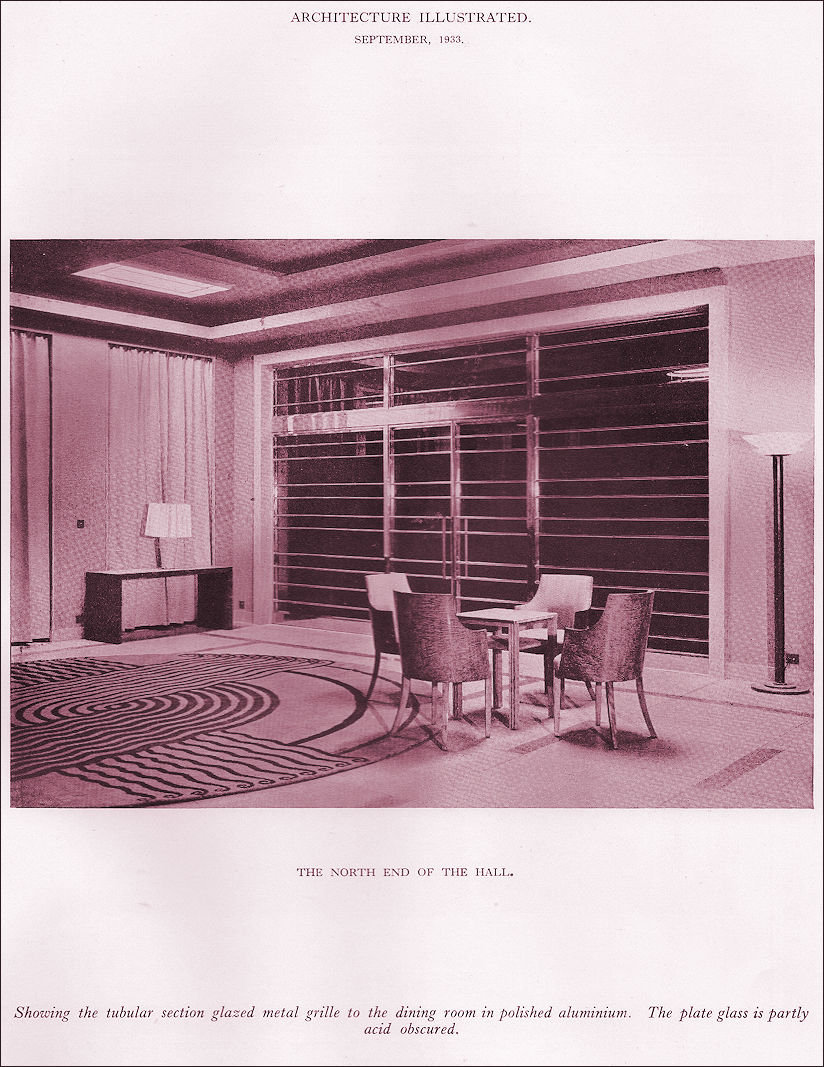
North End of the Hall at the Midland Hotel showing the tubular section glazed metal grille to the dining room in polished aluminium. The plate glass is partly acid obscured - image scanned from the 1933 Architecture Illustrated magazine (from my private collection)
Individual Commissions
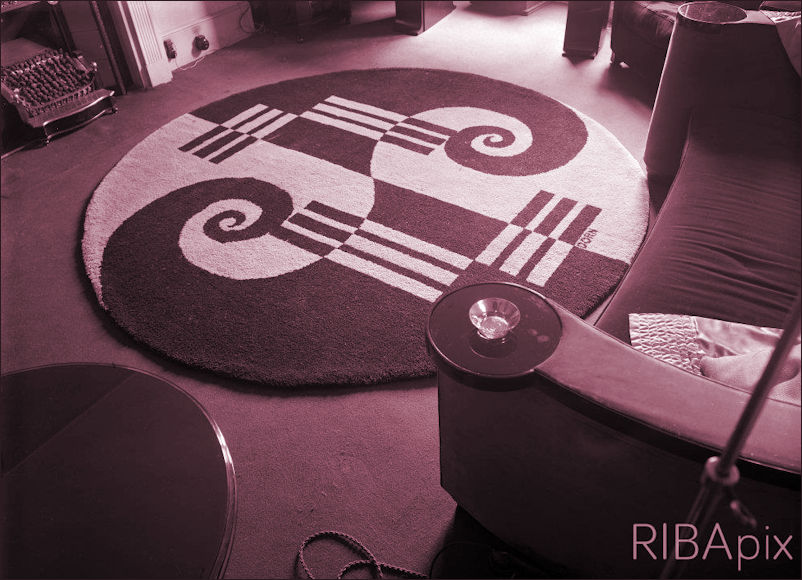
1932 Rug designed by Marion Dorn for H. O. Clarke - image courtesy & © of Architectural Press Archive / RIBA Collections (note the surname woven into the rug)
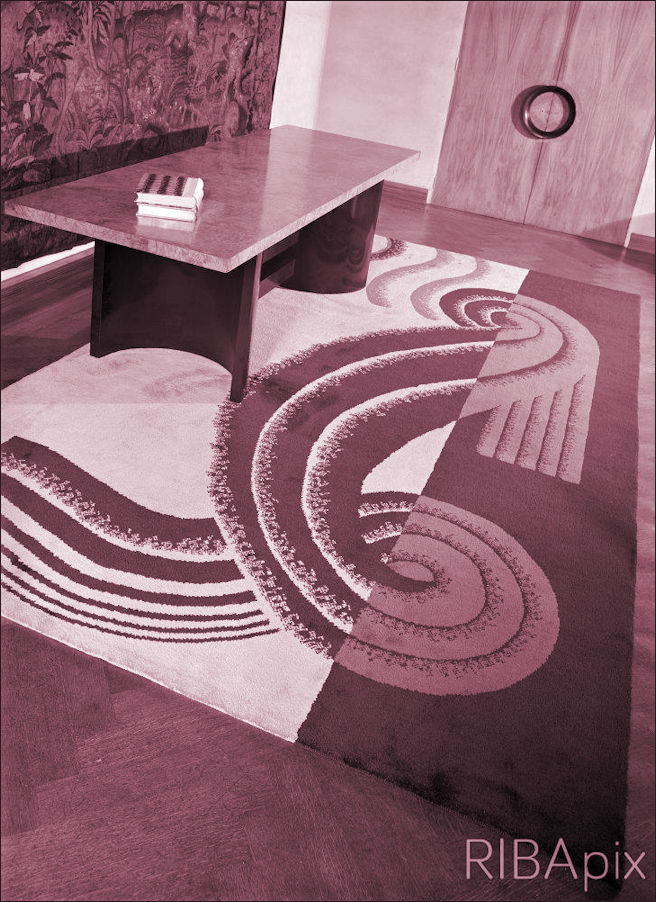
1932 - Mrs Robert Solomon's music room with rug designed by Marion Dorn - image courtesy & © of Architectural Press Archive / RIBA Collections
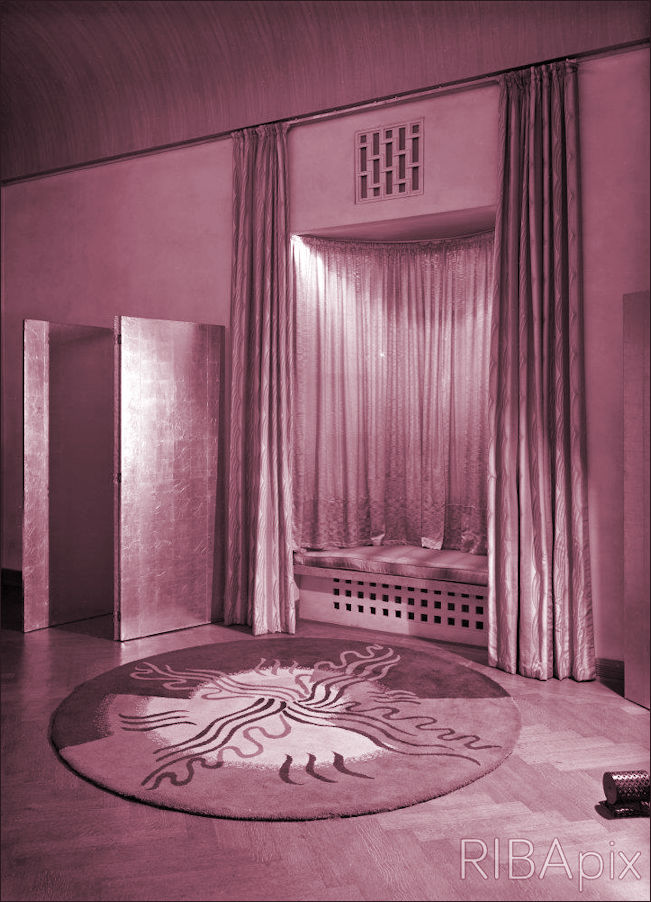
1932 Corner of a music room with rug designed by Marion Dorn - image courtesy & © of Architectural Press Archive / RIBA Collections
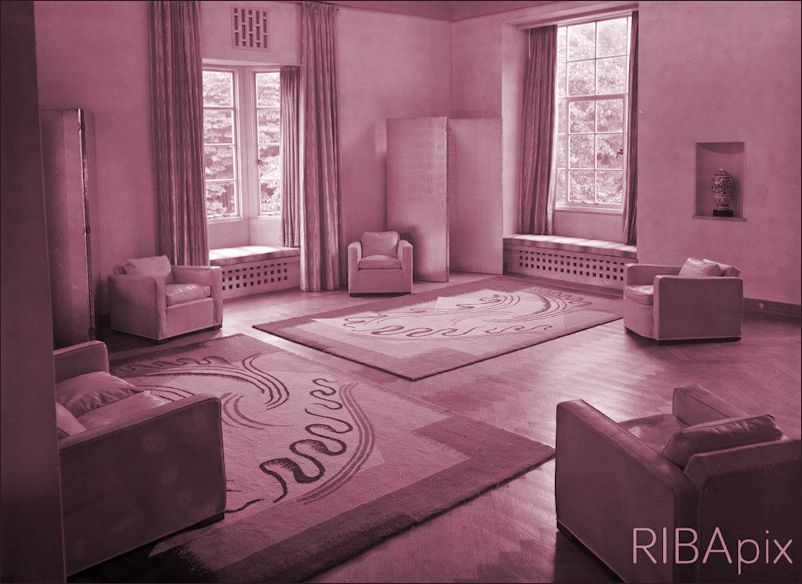
1932 Music room with rug designed by Marion Dorn - image courtesy & © of Architectural Press Archive / RIBA Collections
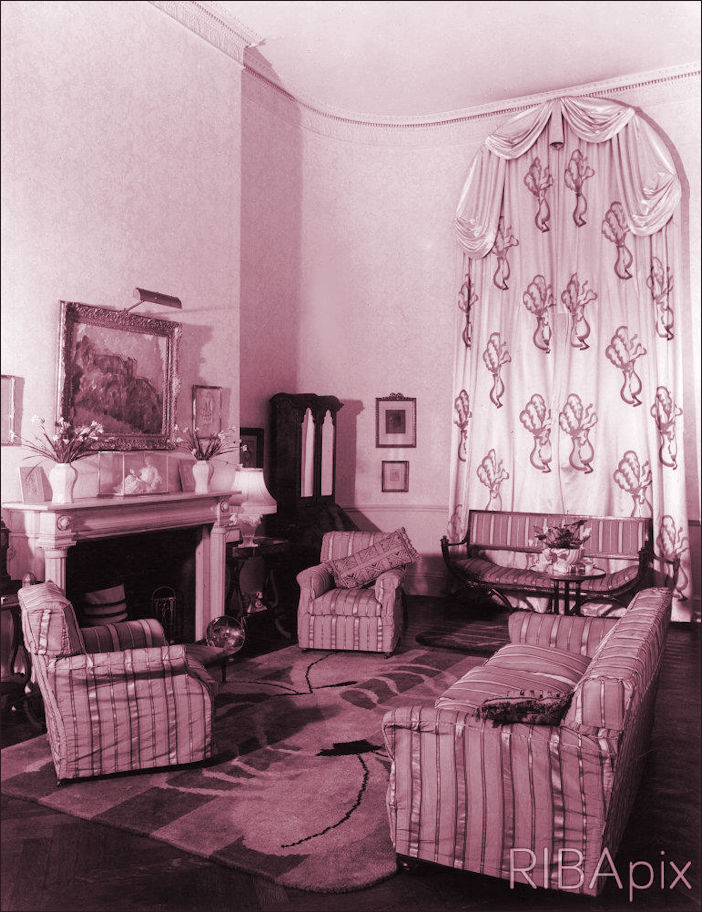
1938 Sir Kenneth Clark's house, 30 Portland Place, London: the sitting room. Sir Kenneth Clark lived at no.30 Portland Place from 1934-1939. The carpet here was designed by Marion Dorn - image courtesy & © of Architectural Press Archive / RIBA Collections
Page refreshed (under construction) : 24th June 2020 (G)
Background images sourced from : Christie's